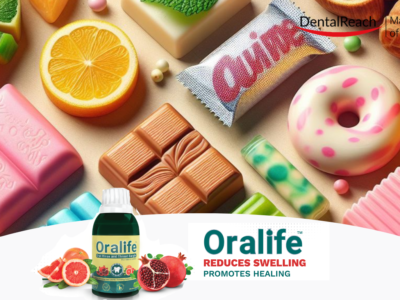Globalization is bi-directional and has asymmetric manifestations in terms of health and wealth (Labonte and Schrecker, 2007). The health impacts of globalization include the rising levels of non-communicable diseases. (Huynen et al, 2005). The global epidemic of non-communicable diseases is responsible for significant mortality and morbidity; NCDs will be responsible to cause 73% of all deaths globally and 70% of all deaths in developing countries by 2020 (Gwatkin et al, 1999; Habib and Saha 2010). The major causes of deaths include ischaemic heart, cerebrovascular, respiratory, obstructive lung, cancer and diabetes diseases (Habib and Saha, 2010). The public health impact of NCDs is widespread and on the rise in developing countries. Majority of NCDs may start early in life, continue into adulthood and their consequences aggravate with ageing (Habib and Saha, 2010). ‘WHO Guideline for Sugars intake for adults and children’ reported that “Noncommunicable diseases (NCDs) are the leading causes of death and were responsible for 38 million (68%) of the world’s 56 million deaths in 2012. More than 40% of those deaths (16 million) were premature (i.e. under the age of 70 years). Almost three-quarters of all NCD deaths (28 million) and the majority of premature deaths (82%) occurred in low and middle-income countries. Modifiable risk factors such as poor diet and physical inactivity are some of the most common causes of NCDs; they are also risk factors for obesity – an independent risk factor for many NCDs – which is also rapidly increasing globally”. (2015)
Increasing prevalence of dental caries and other oral diseases parallels the trend of NCDs in developing countries. Inequalities in oral health continue to exist globally with rich countries witnessing a marked reduction in the experience of dental caries in children and young adults during 1970 and 2000 (Fejereskov and Kidd, 2008). However, in the developing countries, owing to the westernized diets, the consumption of sugar and as a result, dental caries increased during the same period (Watt, 2005). Oral health is affected by the same factors as those for general health (Hobdell et al, 2002). Oral health, similar to general health, depends on the conditions in which people live and the choices they make (Petersen, 2003). Oral diseases and other chronic diseases have “common risk factors” (Sheiham and Watt, 2000; Sheiham, 2005).
The rising levels of obesity and dental caries in children and the recent emphasis on life course perspective in the prevention of diseases underline the fact that comprehensive primordial prevention must begin in early childhood. Both obesity and dental caries are growing concerns in the developing world and can be regarded as markers for NCDs as they can manifest in early childhood (Hujoel, 2009). Furthermore, both fulfil the criteria stated for a condition to be identified as a public health concern (Daly et al, 2002).
Prevalence and severity of the condition
Both the conditions are widely prevalent. In India, one of every two 5 year old children (rural as well as urban) suffers from dental caries (National Oral Health Survey and Fluoride Mapping, 2004; Bagramian et al, 2009) and one out of ten children belonging to middle class parents (urban) is obese or overweight (Bhave et al, 2004). Dental caries may lead to severe pain and infections (Sheiham, 2005); whereas obesity may well be a determinant of life-threatening non-communicable diseases such as diabetes, CHD and a few cancers, which account for a majority of deaths (WHO, 2003).
Impact of the condition on Individual level
Dental caries in children affects children physically, socially and psychologically (Sheiham, 2006). Tooth decay also affects the quality of life: pain, impaired aesthetics, recurrent infections, eating and sleeping difficulties, emergency visits to dentists and hospitals, poor ability to learn, insufficient nutrition, and improper growth and development (Sheiham, 2005). Treating is expensive due to the direct and the indirect costs, e.g. time taken off by the parents (Sheiham, 2006).
The extreme levels of obesity may affect systemic functions and make an individual prone to a variety of health conditions apart from the psychosocial stigmatization the individual may face (Bhave et al, 2004).
Impact on wider society
The costs of treating non-communicable diseases including dental caries are enormous. Oral diseases are the commonest chronic diseases and are amongst the most expensive diseases to treat (Sheiham, 2005). Restoring decayed teeth remains well out of the reach of most countries due to the budgetary constraints; more than 90% of caries remains untreated (Petersen, 2005). Obesity and related NCDs burden economies, too. Diabetes alone may account for 2.5% and 15% of the total healthcare expenditure. For the age category 20–79, the global annual direct cost is likely to be over $153 billion and anticipated to double in 2025 (Habib and Saha, 2010).
Condition is preventable and effective treatments are available
Rich countries witnessed a marked reduction in caries in children during 1970-2000 (Fejerskov and Kidd, 2008); however, dental caries is increasing in developing countries due to increased sugar consumption and inadequate fluoride exposure (Petersen 2005).
Although there have been limited published reports of successful programmes pertaining to obesity prevention and management; obesity and related dietary causes have become a major focus of health policies in the Western World. Since 1998, the WHO has prioritized the prevention of NCDs and has developed strategies for monitoring, preventing and managing major NCDs with special emphasis on four major disease groups that share the same determinants and risk factors, such as the cardiovascular diseases, cancer, diabetes and chronic obstructive lung disease (Habib and Saha 2010).
Relationship between Obesity and Dental Caries in Children and Rationale for an Integrated Approach for Prevention
A systematic review of published literature between 1980 and 2010 addressing childhood obesity and dental caries with a random effects model meta-analysis reported a significant relationship between childhood obesity and dental caries (effect size = 0.104, P = 0.049) (Hayden et al, 2012). Another systematic review of published literature between 2005 and January 2012 did not find sufficient evidence regarding the association between obesity and dental caries; however, the review included studies on children as well as adults (Silva et al, 2013). Yet another recent systematic review of published literature between 2004 and 2011 pertaining to the body mass index and dental caries in children and adolescents reported that dental caries is associated with both high and low BMI; with socio-economic strata modifying the association. The authors advocated combined strategies to target both dental caries and obesity simultaneously (Hooley et al, 2012).
Evidence is emerging from the USA in terms of effective campaigns for wide-scale initiatives targeting environments in schools and beyond. Healthy study using a cluster design in 42 schools throughout the United States, School Nutrition Policy Initiative, a school-based obesity prevention program in Philadelphia, and Healthy Corner Store Initiative are a few examples (AHA, 2010). In the USA, the CATCH study (Child and adolescent trial for cardiovascular health) and the ‘Go Girls’ in African American girls have demonstrated that the eating behaviour of children can be influenced and they can be trained to be more physically active (Bhave et al, 2004). In Singapore; an 8-year school based initiative targeted at obese children was successful in reducing the prevalence of obesity (from a high of 16.6% in early 90s to less than 14.6%. In Brazil, a programme started in Sau Paulo, and because of its impact, now adopted throughout the country, ‘AgitaBrasil’, has demonstrated psychosocial, educational and physical benefits to children (Bhave et al, 2004).
It must be kept in mind that oral health is an integral aspect of systemic health and its isolation from the larger goal of achieving health can seldom meet success. Often oral health does not remain a priority of many health authorities, particularly of poor economies, as other health concerns need preferred attention (Yee and Sheiham, 2002). Furthermore, health messages in isolation may involve unnecessary duplication of efforts and may even create conflicts (Watt, 2005). The Common Risk Factor Approach identifies diet, alcohol, tobacco, physical activity, hygiene as the determinants of health; working on most of them is essential for oral health, too. Nevertheless, often the risk behaviours are clustered within the deprived communities and this could mean an opportunity to address various concerns together (Sheiham and Watt, 2000). This approach makes possible promotion of health with respect to those conditions that are perceived as higher threats (e.g. obesity, coronary heart diseases, cancer) while also covering the promotional aspects related to those oral conditions usually regarded as lesser threats (such as dental caries and periodontal diseases) by people.
So far, there has not been a national programme for the prevention and management of obesity in children. In different parts of the world, the concern is attracting recognition and a few public health campaigns have been run successfully.
Dietary Sugars and Body Weight: Systematic Review and Meta-Analyses of Randomised Controlled Trials and Cohort Studies reported that in adults, reduced intake of dietary sugars was associated with a decrease in body weight [0.80 kg, 95% (0.39 to 1.21); P<0.001]; increased sugars intake was associated with increased [0.75 kg, 0.30 to 1.19; P=0.001]; whereas in children, prospective studies on sugar-containing beverages, the odds ratio for being overweight was 1.55 (1.32 to 1.82) consuming higher quantities compared to those with the lowest. In a recent systematic review by Moynihan and Kelly (2014), Effect on Caries of Restricting Sugars Intake, 42 out of 50 studies on children and 5 out of 5 studies on adults demonstrated lower dental caries experience with free-sugars intake < 10% for energy (based on evidence of moderate quality), and significantly lower dental caries experience with free-sugar intake < 5% for energy (based on evidence of very low quality). An interventional study providing nutritional guidelines to preschools in Racife, Brazil reported that not adopting the guidelines on sugar-reduction was associated with a significantly high caries risk in children (OR: 3.6) compared to those in preschools adopting the guidelines (Rodrigues and Sheiham, 2000). Thus, there exists a potential for an integrated approach based on the provision of dietary guidelines to prevent obesity and dental caries in children. Reduced intake of dietary sugars was associated with a decrease in body weight [0.80 kg, 95% (0.39 to 1.21); P<0.001]; increased sugars intake was associated with increased [0.75 kg, 0.30 to 1.19; P=0.001]; whereas in children, prospective studies on sugar-containing beverages, the odds ratio for being overweight was 1.55 (1.32 to 1.82) consuming higher quantities compared to those with the lowest (Morenga et al, 2013).
Current Recommendations on Free Sugars and NCDs
The WHO, since 2002, recommended that sugars should make up less than 10% of total energy intake per day (WHO, 2003). In the “Sugar Guidelines” published in 2015, the WHO has proposed following recommendations:
“WHO recommends a reduced intake of free sugars throughout the life course (strong recommendation). • In both adults and children, WHO recommends reducing the intake of free sugars to less than 10% of total energy intake (strong recommendation). • WHO suggests a further reduction of the intake of free sugars to below 5% of total energy intake (conditional recommendation). • Free sugars include monosaccharides and disaccharides added to foods and beverages by the manufacturer, cook or consumer, and sugars naturally present in honey, syrups, fruit juices and fruit juice concentrates. • For countries with a low intake of free sugars, levels should not be increased. Higher intakes of free sugars threaten the nutrient quality of diets by providing significant energy without specific nutrients (3). • These recommendations were based on the totality of evidence reviewed regarding the relationship between free sugars intake and body weight (low and moderate quality evidence) and dental caries (very low and moderate-quality evidence). • Increasing or decreasing free sugars is associated with parallel changes in body weight, and the relationship is present regardless of the level of intake of free sugars. The excess body weight associated with free sugars intake results from excess energy intake. • The recommendation to limit free sugars intake to less than 10% of total energy intake is based on moderate quality evidence from observational studies of dental caries. • The recommendation to further limit free sugars intake to less than 5% of total energy intake is based on very low quality evidence from ecological studies in which a positive dose–response relationship between free sugars intake and dental caries was observed at free sugars intake of less than 5% of total energy intake. ”
The American Heart Association (2013) recommended “reductions in added sugars with an upper limit of half of the discretionary calorie allowance, which for most American women is no more than 100 calories per day and for most American men is no more than 150 calories per day from added sugars, or about 6 teaspoons of added sugars a day for women and 9 teaspoons a day for men. As a reference, one 12-ounce can of regular soda contains 140 calories (about 9 teaspoons) from added sugars, one 16-ounce bottle of sugar-sweetened iced tea contains 184 calories (about 11.5 teaspoons) from added sugars, and one regular-sized chocolate candy bar contains 120 calories (about 7.5 teaspoons) from added sugars”.
In a paper published in Nature: The Toxic Truth About Sugar, the authors Lustig et al (2012) claim that excessive sugar consumption results in all the diseases associated with metabolic syndrome; which include diabetes, hypertension, ageing, liver toxicity (similar to alcohol), etc. Following is quoted from the paper:
“A growing body of epidemiological and mechanistic evidence argues that excessive sugar consumption affects human health beyond simply adding calories. Importantly, sugar induces all of the diseases associated with metabolic syndrome. This includes: hypertension(fructose increases uric acid, which raises blood pressure); high triglycerides and insulin resistance through synthesis of fat in the liver; diabetes from increased liver glucose production combined with insulin resistance; and the ageing process, caused by damage to lipids, proteins and DNA through non-enzymatic binding of fructose to these molecules. It can also be argued that fructose exerts toxic effects on the liver that are similar to those of alcohol. This is no surprise because alcohol is derived from the fermentation of sugar. Some early studies have also linked sugar consumption to human cancer and cognitive decline. Sugar also has clear potential for abuse. Like tobacco and alcohol, it acts on the brain to encourage subsequent intake. There are now numerous studies examining the dependence-producing properties of sugar in humans. Specifically, sugar dampens the suppression of the hormone ghrelin, which signals hunger to the brain. It also interferes with the normal transport and signalling of the hormone leptin, which helps to produce the feeling of satiety. And it reduces dopamine signalling in the brain’s reward centre, thereby decreasing the pleasure derived from food and compelling the individual to consume more”.
The “Carbohydrate Hypothesis” has caught attention recently after the acclaimed publication: Good Calories, Bad Calories by Gary Taubes (2008). Two hypotheses “Carbohydrate Hypothesis” and “Lipid Hypothesis” were reported in 1970s explaining the causality of NCDs. The “Carbohydrate Hypothesis” proposed by Cleave and Yudkin, the fermentable carbohydrate intake was cited as the cause of coronary heart diseases and other NCDs. The dental diseases namely dental caries and periodontal diseases were considered to be related to the excessive fermentable carbohydrate consumption. In a contrary view, Keys postulated the “Lipid Hypothesis” stating that excessive dietary fat intake led to systemic diseases. The lipid hypothesis recommended a diet high in fermentable carbohydrate for overall good health, and dental diseases were considered as mere local side effects.
The lipid hypothesis attracted more popularity and the policy makers and the food industry responded positively to it. Several recommendations to regulate the intake of dietary fats over the last few decades of the 20th century, however, failed to make a significant impact in terms of reduction of NCDs (Hujoel, 2009).
The recent published work of Robert Lustig, Gary Taubes, Philip Hujoel and the revision in the dietary guidelines of WHO and AHA are the examples of increased acceptance to the “Carbohydrate Hypothesis”.
Conclusion
A bad diet for dental health is usually a bad diet for general health. Dental diseases can prove to be markers for unhealthy diets and NCDs that appear later in life (Hujoel, 2009). Thus, regulating the intake of free/ added sugars can be an integrated approach to improve health which may first manifest in reduction in dental diseases (particularly, dental caries) and obesity; and later the NCDs (Hujoel, 2009).
References
American Heart Association (2013) The American Heart Association’s Diet and Lifestyle Recommendations http://www.heart.org/HEARTORG/GettingHealthy/NutritionCenter/HealthyEating/The-American-Heart-Associations-Diet-and-Lifestyle-Recommendations_UCM_305855_Article.jsp
Bagramian RA, Garcia-Godoy F and Volpe AR (2009) The global increase in dental caries: a pending public health crisis. American Journal of Dentistry 22:3-8.
Bhave S, Bavdekar A and Otiv M (2004) IAP National TaskForce for Prevention of Adult Diseases in Childhood: Obesity. Indian Pediatrics 41:559-575.
Daly B, Watt R, Batchelor P and Treasure E (2002) Essential Dental Public Health. Oxford University Press.
Fejerskov O and Kidd E (2008) Dental Caries- The Disease and Its Management. Blackwell Munksgaard Second Edition.
Gwatkin DR, Guillot M and Heuveline P (1999) The burden of disease among the global poor. Lancet 354: 586–89.
Habib, S H and Saha, S (2010) Burden of non-communicable disease: Global overview. Diabetes and Metabolic Syndrome: Clinical Research and Reviews 4: 41-47.
Hayden C, Bowler JO, Chambers S, Freeman R, Humphris G, Richards D and Cecil JE (2012) Obesity and dental caries in children: a systematic review and meta-analysis. Community Dentistry and Oral Epidemiology 41 (4); 289-308. DOI: 10.1111/cdoe.12014
Hobdell, M H, Oliveira, E R, Bautista, R, Myburgh, N G, Lalloo, R, Narendran, S and Johnson, N W (2003). Oral diseases and socio-economic status (SES). British Dental Journal 194:91-96.
Hooley M, Skouteris H, Boganin C, Satur J and Kilpatrick N (2012) Body mass index and dental caries in children and adolescents: a systematic review of literature published 2004 to 2011: Systematic Reviews 1:57 http://www.systematicreviewsjournal.com/content/1/1/57
Hujoel P (2009) Dietary Carbohydrates and Dental-Systemic Diseases. Journal of Dental Research 2009 88: 490Hujoel P (2009) Dietary Carbohydrates and Dental-Systemic Diseases. Journal of Dental Research 2009 88: 490
Huynen, M T E, Martens, P and Hilderink, H B M (2005) The health impacts of globalisation: a conceptual framework. Globalization and Health 1(14): 1-12.
Labonte, R and Schrecker, T (2007) Globalization and social determinants of health: Introduction and methodological background (part 1 of 3).Globalization and Health 3(5): 1-10.
Ministry of Health and Family affairs, Government of India (2004). National oral Health survey and fluoride mapping (2002 -03).
Lustig R, Schmidt LA and Brindis CD (2012): The Toxic Truth about Sugar. Nature 482; 27-29.
Morenga LT, Mallard S, Mann J (2013) Dietary sugars and body weight: systematic review and meta-analyses of randomised controlled trials and cohort studies. BMJ 2013; 346 doi: http://dx.doi.org/10.1136/bmj.e7492 (Published 15 January 2013)
Moynihan P and Kelly SAM (2014) Effect on Caries of Restricting Sugars Intake: Systematic Review to Inform WHO Guidelines J Dent Res 93(1):8-18.
Petersen, P E, Bourgeois, D, Ogawa, H, Estupinan-Day, S and Ndiaye, C (2005) The global burden of oral diseases and risks to oral health. Bulletin of World Health Organization 83(9): 661-669.
Rodrigues and Sheham A (2000) The relationships between dietary guidelines, sugar intake and caries in primary teeth in low income Brazilian 3-year-olds: a longitudinal study. International Journal of Paediatric Dentistry. 10 (1) 47–55.
Silva AER, Menezes AMB, Demarco FF, Vargas-Ferreira F and Peres MA (2013) Revista de SaúdePública 47(4) http://dx.doi.org/10.1590/S0034-8910.2013047004608
Sheiham A and Watt R G (2000) The common risk factor approach: a rational basis for promoting oral health. Community Dentistry and Oral Epidemiology 28:399-406.
Sheiham (2005) Oral health, general health and quality of life. Bulletin of the World Health Organization 83 (9): 644-645.
Sheiham A (2006) Dental caries affects body weight, growth and quality of life in pre-school children. British Dental Journal 201: 625-626.
Taubes G (2008) Good Calories, Bad Calories: Challenging the Conventional Wisdom on Diet, Weight Control, and Disease. Knopf. 2007.
Watt R (2005) Strategies and approaches in oral disease prevention and health promotion. Bulletin of the World Health Organization 2005;83:711-718.
World Health Organization (2015) Guideline for Sugars intake for adults and children.
World Health Organization (2003) World Health Organization Global Strategy on Diet, Physical Activity and Health- Obesity And Overweight
Bonus: Download our monthly e-bulletin!Click here to get it
DISCLAIMER : “Views expressed above are the author’s own.”

















Comments